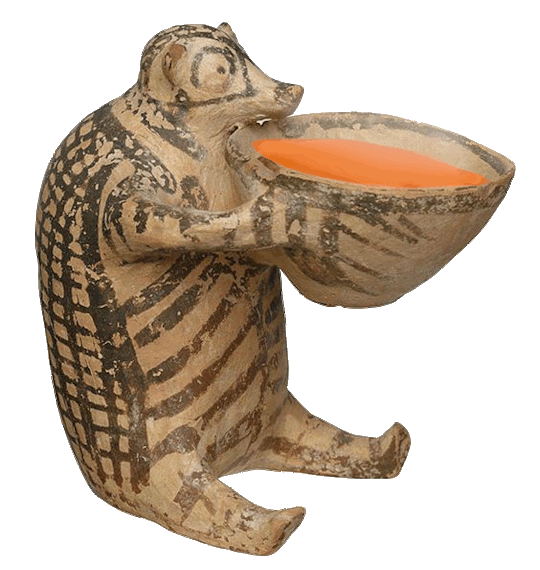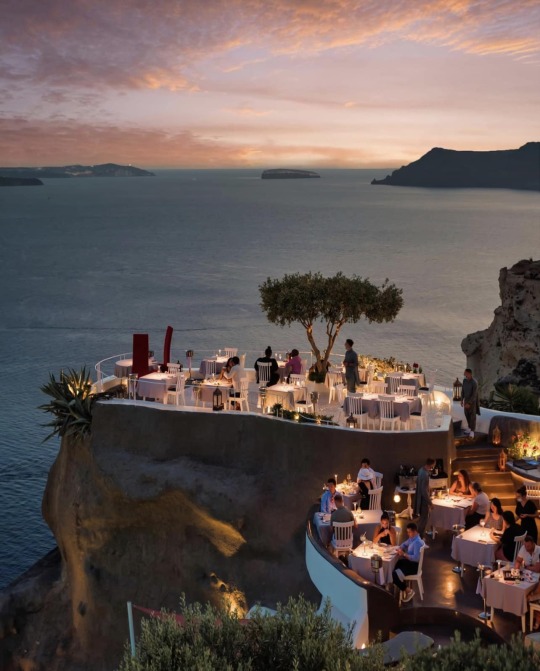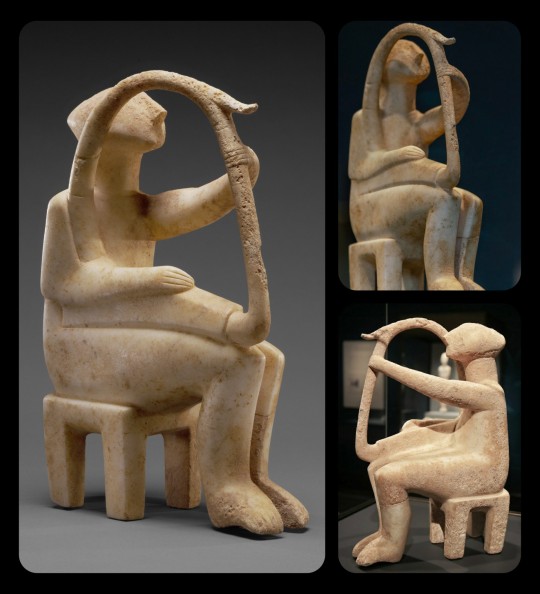#cyclades Greece
Explore tagged Tumblr posts
Text






This is the beautiful island of 📍Sikinos (Σίκινος) - @cyclades-islands 💙
Being on the island feels like slipping back into a simpler time, when days were more relaxing and carefree!
📸 by: https://www.instagram.com/p/DIZVrCHs9mk/?igsh=MWliZHdhbGd6bGFyNw==
#cyclades#greece#travel#summer#cyclades_islands#κυκλαδες#ελλαδα#aegeansea#visitgreece#greeksummer#sikinos#Sikinos Greece#cyclades Greece#Sikinos Cyclades
29 notes
·
View notes
Text
Hello, quick question. What the fuck

"Santorini: The local department of the National Conservatory has shut down - It will be converted to an Airbnb"
If you ever ever travel to Greece, one plea: DON'T stay to an Airbnb. They are destroying the country. Trust me. If you want the good of the country and its people, go to a hotel, maybe ideally a small business boutique hotel but any hotel is more ethical than an Airbnb at this point.
#coals of greece#greece#overtourism#mass tourism#travel#greek facts#santorini#cyclades#cycladic islands#greek islands#hide
3K notes
·
View notes
Text

S a n t o r i n i
610 notes
·
View notes
Text
Mykonos, Greece: Mykonos is a Greek island, part of the Cyclades, lying between Tinos, Syros, Paros and Naxos. The island has an area of 85.5 square kilometres and rises to an elevation of 341 metres at its highest point. The largest town of Mykonos, which is on the west coast also known as Chora. Mykonos's nickname is "The Island of the Winds", due to the very strong winds that usually blow on the island. Tourism is a major industry and Mykonos is known for its vibrant nightlife. Wikipedia
448 notes
·
View notes
Text
Oia, Santorini, Greece: Oia is a small village and former community in the South Aegean on the islands of Thira (Santorini) and Therasia, in the Cyclades, Greece. Since the 2011 local government reform it has been part of the municipality of Santorini, of which it is a municipal unit. It covers the whole island of Therasia and the northwesternmost part of Santorini, which it shares with the municipal unit of Santorini. The main street is named Nikolaou Nomikou. Wikipedia
505 notes
·
View notes
Text

Hatsune Miku as a Cycladic idol from the Neolithic period. Reference used:

#vocaloid#greece#hatsune miku#cyclades#miku worldwide#miku world tour#cycladic idol#cycladic#cycladic civilization#greek history#bronze age aegean#bronze age#neolithic#artists on tumblr#tagamemnon#miku through the ages
708 notes
·
View notes
Photo

Apothikes Beach
Andros Island, Greece 🇬🇷 ❤
IG: stelpan_
#andros#andros island#greece#greek#greek islands#greek island#cyclades#cyclades islands#sea#rococo#aegean
5K notes
·
View notes
Text
uhm he'll be having some pumpkin soup on your dashboard now... thank you.

(first time I ever attempted to animate something with gimp lol. same figurine as yesterday.)
(Zoomorphic vase in the shape of an animal, a little bear or a hedgehog, holding a bowl. Chalandriani, Syros. Early Cycladic II period, Keros-Syros Culture (2800-2300 BC).
2K notes
·
View notes
Text

Colourful House, Mykonos, Greece: Mykonos is a Greek island, part of the Cyclades, lying between Tinos, Syros, Paros and Naxos. The island has an area of 85.5 square kilometres and rises to an elevation of 341 metres at its highest point. The town is also known as Chora. Wikipedia
497 notes
·
View notes
Text



Koufonissi island (2) (3) by Marie Therese Magnan
Via Flickr:
(1) Closeup view of Agios Georgios church.
74 notes
·
View notes
Text

Chora, Mykonos
#photography#greece#colorful#landscapephotograpy#nofilter#mykonos#cyclades#greek islands#chora#timewithfriends#mayingreece#sunset
286 notes
·
View notes
Text
That’s how diving into summer feels like 🌊📍Milos island (Μήλος) - @cyclades-islands
📸 by: https://www.instagram.com/reel/DFV0yYZMLqf/?igsh=MWNvM3hmaTM2NTFuMA==
#cyclades#greece#travel#summer#cyclades_islands#κυκλαδες#ελλαδα#aegeansea#visitgreece#greeksummer#milos#milos Greece#cyclades greece#milos Cyclades#diving into summer
91 notes
·
View notes
Photo

Dinner for two. Lycabettus restaurant in Oia, Santorini, Greece.
#greece#europe#romantic#sunset#travel#restaurant#luxe#santorini#oia#lycabettus restaurant#cyclades#cycladic islands#greek islands
9K notes
·
View notes
Text

S a n t o r i n i
991 notes
·
View notes
Text
Prehistoric Figurine of a Harp Player, from the Cyclades (Greece), c. 2700-2300 BCE: this figurine was shaped from a block of solid marble and then slowly sanded into form using pumice and emery

The figurine depicts a musician with a frame harp, an instrument that originated in the Near East and then later spread to the peoples of the Aegean. A sound box forms the section along the base of the instrument, and a small protrusion can be seen near the top of the harp's frame; some experts have argued that this protrusion might represent an ornamental carving of a waterfowl's head, while others argue that it represents a musical extension that facilitates the projection of sound (a feature that often appears on the stringed instruments of the ancient Near East).
This piece measures 35.8cm (about 14 inches) tall.
Musical performances like this are rarely depicted in Cycladic artwork. Depictions of male characters are similarly rare, representing only 5% of the Cycladic sculptures that are known to exist. When male figures are depicted, however, they are frequently shown playing musical instruments, as seen here.

Figurine of a Harpist, c. 2800-2700 BCE: a similar example of a Cycladic sculpture that features a musician with a frame harp
The Museum of Cycladic Art provides a more detailed explanation of the process by which these figures were created:
As we can deduce from the few unfinished figurines that have been discovered so far, the first step in the process was to roughly shape the raw piece of marble into a figure by the impact of a mallet. Emery powder was then used to abrade the surface until it obtained the desired shape and size. Once the desired shape was achieved, the surface was smoothed carefully before the fine work of carving the details started. At the end, the figurine was polished to a high degree that is still amazing.
And according to The Met:
Many of these figures, especially those of the Spedos type, display a remarkable consistency in form and proportion that suggests they were planned with a compass. Scientific analysis has shown that the surface of the marble was painted with mineral-based pigments—azurite for blue and iron ores, or cinnabar for red.
The Cycladic Islands (also known as the Cyclades) are a group of about 30 separate islands in the Southwest Aegean, off the coast of mainland Greece. These islands contain a wealth of natural resources, including marble, emery, pumice, obsidian, and an assortment of precious metals. The prehistoric peoples of the Cyclades made use of these resources for many different purposes, but the marble figurines/sculptures that they crafted during the Bronze Age are perhaps their most famous creation.
The vast majority of these figurines are stylized depictions of the female form. The cultural significance of the sculptures remains unclear; they may have simply been created as decorative pieces/artwork, without any additional function, or they may have been used as fetishes, totems, religious idols, grave goods, or votive offerings.
Sources & More Info:
The Getty Museum: Figurine of a Harp Player
The Met: Cycladic Harp Player
The Met: Early Cycladic Art and Culture
The Museum of Cycladic Art: Techniques
#archaeology#history#artifact#ancient history#prehistoric art#art#sculpture#music#greece#cycladic#bronze age#anthropology#harp
1K notes
·
View notes
